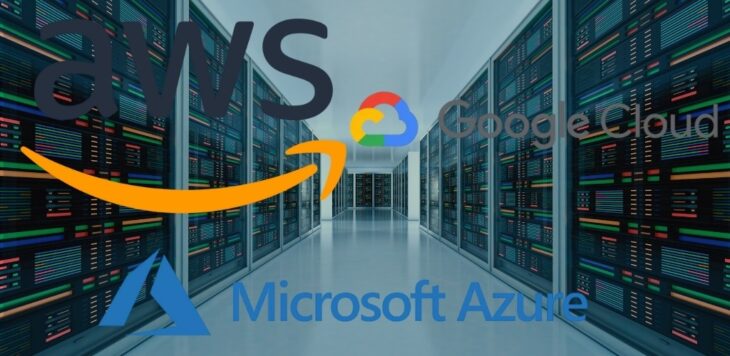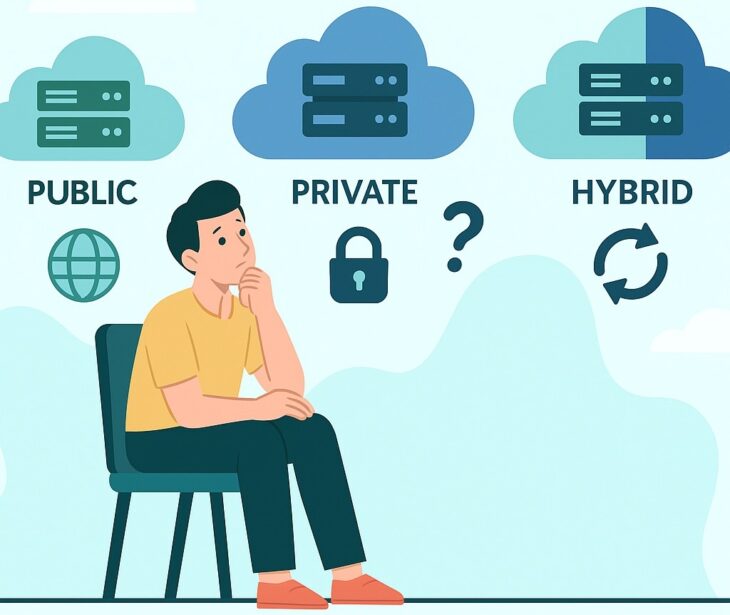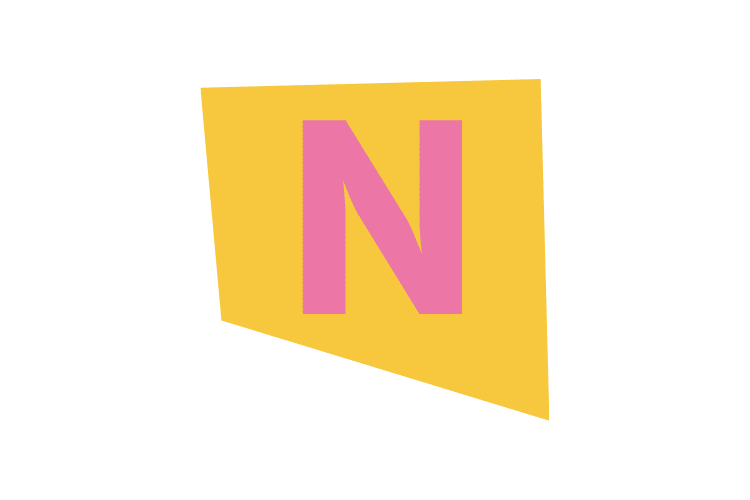The word “cloud” might sound light and intangible, but when you’re making a decision for your business, especially one that touches every file, database, and customer interaction, cloud strategy is anything but fluffy.
It’s foundational. And choosing the right kind of cloud setup isn’t just an IT call – it’s a business-defining one. So, where do you go? Public? Private? Hybrid?
Each cloud model – public, private, and hybrid – comes with trade-offs. What fits a lean startup might choke a healthcare provider. What works beautifully for retail traffic spikes might be completely wrong for a defense contractor.
That’s why the right decision depends on what you’re really trying to accomplish: control, cost savings, compliance, performance, or some mix of them all.
Let’s break it down clearly and practically, without jargon and without circling around the obvious.
Table of Contents
ToggleWhat Does It Really Cost?
Money’s always part of the equation. And cloud pricing isn’t just a spreadsheet problem – it’s an operational reality that affects scale, speed, and sustainability.
Public Cloud Is Affordable, but Only If You Watch It

Public cloud providers like AWS, Microsoft Azure, and Google Cloud charge you based on how much you use. Spin up a virtual server, store some data, run analytics – you’re billed by the minute, hour, or gigabyte. For many, that’s great news.
Startups love this setup. They can scale quickly, test new ideas, and avoid giant upfront bills. In fact, public cloud spending hit $675.4 billion in 2023 and is headed past the $1 trillion mark by 2027. It’s popular for a reason.
But here’s the catch: without guardrails, your bill can spiral. A developer forgetting to shut off a test environment? That’s hundreds down the drain. A marketing campaign that explodes in popularity? Great news – until the usage bill lands.
Private Cloud – High Start-Up Costs, Predictable Over Time
Building or renting your own private cloud means investing in infrastructure – servers, storage, networking gear. You either host it yourself or pay a managed service provider (MSP) to do it for you.
Or you could use an enterprise cloud platform to avoid upfront costs while retaining control.
It’s expensive at first. But for large enterprises running stable, predictable workloads, it can be more cost-effective long term. No surprise fees, no unpredictable usage spikes. Just your gear, your data, your rules.
Hybrid Cloud – The Balancing Act
Hybrid cloud lets you blend both. You might run payroll and customer data in your private cloud for security, but use public cloud power during holiday sales or product launches. It’s a “best of both worlds” approach – if it’s managed well.
| Cloud Type | Cost Structure | Best For |
| Public | Pay-as-you-go | Startups, variable workloads |
| Private | High upfront, lower long-term | Enterprises with stable demands |
| Hybrid | Mixed costs, customizable use | Businesses needing both flexibility and control |
Security Isn’t Optional Anymore
Security used to be something you patched on. Now it’s baked into every tech decision – and cloud models treat it very differently.

Public Cloud
Big-name providers take security seriously. Their data centers are fortified with everything from armed guards to biometric scanners.
But the model is shared. They handle the infrastructure, but you’re on the hook for protecting your apps, data, and access.
That shared responsibility setup might work for e-commerce or social apps, but it makes life harder if you’re dealing with strict regulations (think finance, healthcare, or government work). Plus, data jurisdiction can get tricky if you’re operating across borders.
Private Cloud
A private cloud gives you total control. No one else is on the hardware. You set the security protocols, manage the firewalls, and handle encryption keys yourself.
That’s why it’s the go-to for companies managing personally identifiable information (PII), protected health info (PHI), or financial transactions.
With over 75% of the world now covered by data privacy regulations, that level of control is starting to look less like a luxury and more like a necessity.
Hybrid Cloud
Hybrid cloud offers flexibility. You can stash sensitive data in your private environment while using public cloud services for other tasks. Want to run AI models on public GPUs while keeping customer records private? That’s hybrid’s sweet spot.
| Cloud Type | Security Control | Compliance Fit |
| Public | Shared responsibility | Limited to general data |
| Private | Full control | High-stakes industries |
| Hybrid | Flexible allocation | Mixed needs, regulatory zones |
Scale, Speed, and Staying Nimble

Every business hits a tipping point: suddenly traffic spikes, your database grows like crazy, or a campaign goes viral. That’s where cloud scalability saves the day – or doesn’t.
Public Cloud
Need 1,000 servers right now? Public cloud can give you that in minutes. This kind of elasticity is why companies lean on it for unpredictable workloads – flash sales, major product launches, or seasonal demand.
Private Cloud
In a private cloud, your capacity is limited to what you’ve built. Need more power? That’s a procurement cycle – maybe weeks or months. It’s stable, but not exactly nimble.
Hybrid Cloud
Hybrid cloud gives you a buffer. Your private cloud handles day-to-day operations. When demand surges, public cloud steps in – a model known as “cloud bursting.” You get both predictability and elasticity.
How Much Control Do You Need?
Sometimes it’s not about security or cost. It’s about being able to tweak things under the hood. Some industries need custom setups that can’t run on off-the-shelf public services.
Public Cloud
You get tons of developer tools, AI models, databases, APIs. But you don’t manage the servers themselves. That’s perfect for fast-moving teams who care more about building than tweaking hardware.
Private Cloud
Need to optimize for legacy apps? Running sensitive workflows that need specific CPUs or network topologies? Private cloud gives you full access to tweak, tune, and test as much as you want.
Hybrid Cloud
You can run legacy systems on-prem, optimize them endlessly, and still take advantage of public cloud for high-volume tasks or experimental projects. It’s a flexible strategy for companies straddling old and new tech.
Performance, Latency, and Real-Time Processing
Time matters – especially in fields like finance, streaming, or logistics, where milliseconds count.
Public Cloud
If your users are near the cloud provider’s data center, performance can be excellent. But if your data is halfway across the world, latency can creep in.
Providers try to offset this by offering global regions and edge services, but performance can still vary.
Private Cloud
When your servers are on-site or nearby, latency drops. That’s huge for applications that need to process data in real time – media rendering, telemetry analysis, or anything involving instant feedback.
Hybrid Cloud
You can put your real-time tools on a private cloud and run background analytics or reporting in the public cloud. It’s about optimizing – not compromising – on performance.
Real-World Scenarios and Who’s Using What

Let’s get away from theory and look at how different industries actually use cloud models in practice:
- Retail: A national retailer might run point-of-sale systems and inventory management on a private cloud for reliability, while pushing promotional campaign traffic to the public cloud during Black Friday.
- Finance: A bank may keep customer data in a private cloud to meet GDPR requirements but use public cloud services for AI fraud detection models.
- Media & Entertainment: Video editing and rendering benefit from private cloud’s performance. But streaming, CDN delivery, and global distribution? That’s public cloud territory.
- Startups: Lean teams often go all-in on public cloud, especially early on, because it’s fast and doesn’t demand upfront capital. But many shift to hybrid as they scale.
According to IBM’s Transformation Index, 77% of organizations are now using hybrid cloud models. That trend’s not slowing down. Gartner expects that by 2025, three out of four businesses will rely on some form of hybrid or multicloud strategy.
A Few Final Thoughts, Before You Commit
There’s no single right answer. What matters is finding the model – or combination of models – that actually fits how your organization operates.
Ask yourself:
- Are we managing highly sensitive data?
- Do we have compliance obligations that public cloud can’t handle?
- How quickly do we need to scale?
- Can our team manage infrastructure in-house, or do we need external support?
- Are we locked into legacy systems that require customization?
And if you’re stuck, there’s no shame in calling in reinforcements. Cloud consulting services aren’t just for massive enterprises, as they can help tailor your infrastructure strategy before expensive mistakes start piling up.


